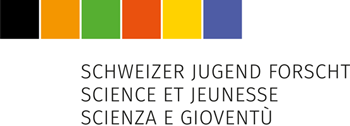Biologie | Environnement
Elisa Bernardi, 2001 | Neuchâtel, NE
Nowadays, wildlife conservation is important because many species are near extinction. To save the endangered fauna, methods like reintroduction are often used with no guarantee of the species surviving in the wild. Alpine ibex experienced severe bottlenecks during their reintroduction process. To save the species from disappearing again, it became necessary to carry out genetic monitoring in order to analyse the genomic proximity in multiple populations recently reintroduced in the Alps. In this project, I used newly developed genetic markers, such as single nucleotide polymorphism (SNP) and the major histocompatibility complex (MHC), to analyse the genetic variability of Alpine ibex populations. I also investigated possible introgression from domesticated goats that can be an obstacle or an advantage to the reintroduction success.
Introduction
Bottlenecks can lead to a decrease of genetic variability, increased inbreeding and reduced protection against diseases. To analyse the genetic situation of populations of Alpine ibex in the Swiss, French and Italian Alps, a genetic monitoring process was carried out. Single nucleotide polymorphism (SNP) markers were developed on neutral genomic regions and on the major histocompatibility complex (MHC), a set of genes involved in the immune system. The first goal of my project was the validation of these new genetic markers for Alpine ibex genetic analyses. Then, I investigated the genetic variability of Alpine ibex populations and their genetic proximity to the Iberian ibex and the domestic goat.
Methods
DNA samples from Alpine and Iberian ibex and domestic goats were extracted, enlarged by polymerase chain reactions (PCR) and genotyped, looking for SNP markers, such as neutral SNPs and MHC. Then, this data was processed using the R scripting language in order to generate principal component analyses (PCA). I carried out four PCAs using: (I) SNPs detected on the whole genome and all the populations of all species, (II) 634 neutral SNPS and all species, (III) 634 neutral SNPs but only the populations of Alpine ibex, and (IV) only the 135 MHC marker and all species.
Results
The PCA analyses discriminated the Alpine ibex, the Iberian ibex, and the domestic goats, confirming the power of the newly developed SNP markers for differentiating the three species. In addition, our genetic method allowed the detection of potential F1 hybrids and backcrosses between Alpine ibex and domestic goats. The results show a low genetic variance among the different populations of Alpine ibex when looking at the PCAs on all the genomes and the natural markers. In addition, analysing the PCA on the MHC gene and all the species revealed potential traces of introgression.
Discussion
The results show that Alpine ibex populations are similar genetically when we look at the neutral SNP markers. This can be explained by the fact that all the populations collected in different European countries were reintroduced from the same parental population. On the other hand, based on the investigation of the MHC region, Alpine ibexes seem to have some shared DNA with domestic goats. As this is a region responsible for immunity, introgression from another species might result in higher genetic diversity and in greater resistance against some diseases. Nevertheless, introgression can also potentially lead to genetic depression or maladaptation and could cause the disappearance of the Alpine ibex.
Conclusions
One of the goals of this project was to validate a new genotyping method. The results are favourable as our SNP markers were powerful enough to analyse the genetic structure of Alpine ibex despite its low variance. Our genetic markers also allowed the detection of probable introgression on the MHC genes of Alpine ibex. In the light of these results, further studies would need to be carried out in order to confirm the traces of goats’ genome in the Alpine ibexes’, especially on the MHC genes. In addition, our results advocate for a long-term monitoring of the genetic evolution of the European Alpine ibex populations.
Appréciation de l’experte
Margot Paris
Pour ce projet, Elisa Bernardi a étudié la structure génétique de 160 bouquetins des Alpes réintroduits en Suisse, France et Italie après que l’espèce ait frôlé l’extinction à la fin de XIXe siècle. En utilisant des marqueurs génétiques neutres ou liés à l’immunité, ce travail a montré une faible variance génétique et une possible introgression du génome de la chèvre domestique dans les populations réintroduites. Le travail d’Elisa, écrit en anglais, montre sa grande compréhension des mécanismes génétiques complexes pouvant impacter le succès de la réintroduction d’espèces menacées.
Mention:
très bien
Prix spécial Institut Paul Scherrer – Stage de recherche à la Jungfraujoch
Lycée Denis de Rougemont, Neuchâtel
Enseignant: Prof. Dr. Daniel Croll



